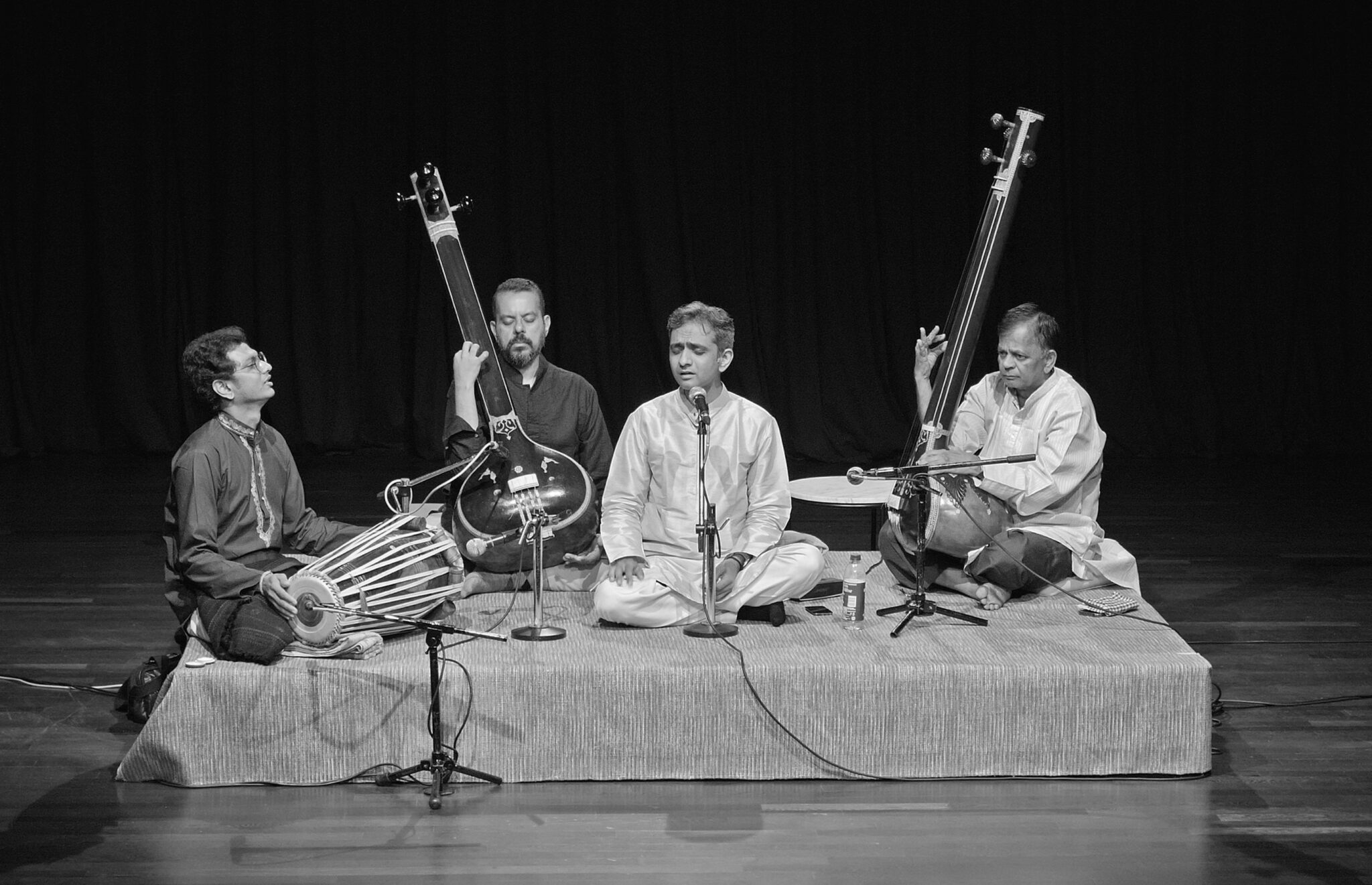EM GUIDE: Thoughts on the semiotics of music – parlour game

Here’s a fundamental difference between words and musical notes: words address things one at a time, and musical notes contain a plurality of meanings. I do not mean that a large number of potential meanings co-exist within the musical note, but rather that a musical note accomplishes the very plural of meaning: an irreducibility, an explosion, an expanding web of signification. But what then does music communicate, and how does it communicate?
Musical forms, structures and patterns are a concrete presentation of the way people in a culture conceive of music. If music could somehow be isolated from its history, culture or social function, it would be empty. Music on its own has no reality. Music inherently refers to things – it doesn’t represent things like how words do. And whatever music refers to only makes sense to an interpreting mind, like that of the listener or the musician themselves.
A universal semiotic theory can not apply to all musical cultures because surely a theory is shaped by its subject matter. So with this article, I will focus on a particular case: a standard presentation of Dhrupad music – from instrument tuning to applause – while offering up my meanderings on the subject of musical signification. The semiotic processes at play in a situation like this one are open. Although with this article I may not be able to offer a universal theory for musical signification, perhaps this openness could make a relative universality achievable.
So, let’s begin. Four musicians: a vocalist, a pakhawaj player and two tanpura players.
1. Tuning
In any Dhrupad concert, the first point of contact with the music for both musicians and listeners is the tuning of the tanpuras. The tanpura’s four strings are tuned to the tonic note: the tonal center of the performance. Once one tanpura is in tune with itself, it is used as a reference for the second tanpura, which is adjusted to sound identical to the first tanpura in both pitch and tonal texture. The Hindi verb milna, meaning to meet, is used to describe this approach to tuning. Instead of the instruments being tuned in relation to an established temperamental system, they are tuned in relation to each other. They are introduced to each other. They meet.
The two tanpuras are in tune once they are virtually indistinguishable from each other. The instruments are played simultaneously over the course of the entire performance. When played together, the rich overtones generated by the tanpuras combined with the natural irregularity of each player’s plucking speed and pressure produce a pulsating wall of sound. This sound does not refer to anything outside of itself: it provides a surface for signification.
2. The Vocalist
The vocalist begins to sing the tonic note. The vowel they use to express this first note is aa. They proceed to use more syllables as they introduce more notes in the chosen Raga’s scale. It is here that the fringe of contact between music and language is established in the performance.
In the Indian musical arts, the singing voice has a profound connection to the speaking voice. For instance, one exercise in modern Dhrupad vocal training involves swiftly switching back and forth between singing and speaking. This is done to minimise any vocal position changes during the switch, in order to bring the singing voice closer to the speaking voice.
The syllables being used by the vocalist to express notes are believed to be a reduction of the Vedic mantra “ananta hari om narayan…” yet one could also make a case for how they are a reduction of a string of words in any of the Sanskrit based languages. The syllables used by the musician – a re ne na, té te re ne na, ri re re ne, etc. – do not have a representational function in the way that words do. They are displaced consonants and vowels; language stripped of explicit meaning. These syllables have the possibility for meaning. They are the truth behind language; meaning in its potential voluptuousness.
3. The Music
The vocalist’s voice is distinctly theirs, yet impersonal at the same time. Their approach to rendering the music refers to history. As listeners, what we hear is their pedagogy.
In Dhrupad, there are essentially two approaches to melodic exposition: relational and developmental. The relational approach essentially prefers melodic shapes over melodic lines. In the relational approach, the vocalist uses their breath to sing a sequence of notes in a way that demonstrates the interrelationships between those notes; relations characteristic of the Raga. The vocalist does this by drawing attention to specific melodic shapes between notes. The developmental approach focuses instead on the microtonal characteristics of a single note. Here, the vocalist will use their breath to focus attention to the frequency position and micro modulation of a single note in the scale according to the characteristics of the Raga. A contemporary Dhrupad vocalist often incorporates both approaches into a single performance. How they use one approach over the other, and when in their performance of the Raga is indicative of their pedagogy.
Musicians do not improvise: they make impulsive decisions. Their decisions are informed by a deep understanding of the musical system they are performing. It is through a contemporary body that the workings of history must pass. The vocalist reorganises, cuts and reassembles existing musical phrases impulsively, not deliberately.
After the vocalist has demonstrated the nuances of the Raga, the pakhawaj player uses a small hammer to fine tune the drum to the tonic note. A lyrical composition is then performed together with the percussionist. If until now the music had the potential for meaning, this fixed composition is a single manifestation of that potential. It is one of many avatars of the selected Raga, heard in the form of lyrics set to a melody and rhythmic cycle.
4. The Audience
Various levels and intensities of musical time have been weaving in and out of one another: the pulsating sound of the tanpura, the vocalist using syllables to express notes, and the percussionist playing a rhythmic cycle. Lines of communication have been established among the musicians, but also with their respective lineages in the way they embody their pedagogy. This multitemporal activity encompasses a complex network of semiotic processes that aren’t only being interpreted by the performers, but by listeners as well.
The listener’s mind follows the musical sign, interpreting it in a way that shapes their feelings. When moved by a musical idea, they shake their head from side to side. This gesture conveys a range of emotions: joy, sadness, surprise, and surrender. Sometimes the listener instinctively exhales with an aha, a response that encompasses both wonder and pity.The task of the musicians is not to deliver one set of feelings to the audience, but the opposite: to provide a view of the Raga expansive enough to invoke a wide spectrum of feelings. The feelings of each individual in the audience is the product of an active interpretive process. The music that they are interpreting is the raw material of language prior to the division of meaning. This interplay of interpretations between musicians, history and listeners makes music in this case not about the world, but of it.


This article is brought to you by NOIES as part of the EM GUIDE project – an initiative dedicated to empowering independent music magazines and strengthening the underground music scene in Europe. Read more about the project at emgui.de.
Funded by the European Union. Views and opinions expressed are, however, those of the author(s) only and do not necessarily reflect those of the European Union (EU) or the European Education and Culture Executive Agency (EACEA). Neither the EU nor EACEA can be held responsible for them.